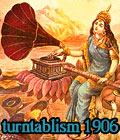 How to make melodies that fit a bassline??? How to make melodies that fit a bassline???      |
illuminati
Cool Producer
 

Registration Date: 21-01-2004
Posts: 162
Helpfulness rating:
 |
|
|
what is a good way to come up with a melody to follow beats and bass??? anybody please!!!!
|
|
|
27-01-2004 00:51 |
|
|
thechronic 
admin
     

Registration Date: 01-11-2002
Posts: 5,293
Helpfulness rating:
 |
|
Oh dear, you need a crash course in music theory  I'll try to explain as simple as I can!!
I'll try to explain as simple as I can!!
You need to establish a scale and then a chord structure and then derive your melodies and bass lines from it.
SCALES
You can decide on using a major (=kind of happy sounding) or minor (=kind of sad sounding) scale. Mixing up major and minor is usually not done, but everything's possible in modern music. BTW there are lots of minor scales (like natural minor, harmonic minor etc) and there are a lot of other scales too (like arabic, pentatonic (=chinese or folk sounding), blues and a lot of scale types which are ancient such as mixolydian and stuff). Every scale is represented by a series of notes. This is easier to understand if you have a keyboard btw 
Every scale is determined by a base note and the notes that follow up to it. There are 12 notes in one octave:
C C# D D# E F F# G G# A A# and B. The notes with a '#' represent the black notes on a keyboard and the other ones the white notes. Every scale is represented by a series of 'intervals' between notes.
Take for example the scale 'C major':
C D E F G A B - the base note is 'C' (which is the first note in the scale) and you can see that not all notes are included in the scale: all the '#' notes are skipped. These are the 'intervals'.
So from this we can derive that the major scale consist of the following intervals:
note (C) - skip (C#) - note (D) - skip (D#) - note (E) - note (F) - skip (F#) - note (G) - skip (G#) - note (A) - skip (A#) - note (B)
You can play all the notes but you may not play any of the skipped notes for the entire song!! (OK OK everything's possible in modern music, but I'd really suggest not playing any notes outside your scale unless you make very experimental music)
If you now want to calculate for example the scale 'D major' you have to keep the intervals but start off with D instead of C, so that makes:
major intervals are: note - skip - note - skip - note - note - skip - note - skip - note - skip - note
so that makes: D E F# G A B C# !!!
Every scale type has its certain intervals, a different set of intervals gives a different feeling, take for example the blues scale which is very easy to recognize when you play it:
C D# F F# G A#
note - skip - skip - note - skip - note - note - note - skip - skip - note - skip
If you start off with a bassline that you already have written, input the notes in a program that can calculate which scales fit (the old sequencer 'Bars and Pipes' had this, but when you look for it you'll find similar tools for PC too). Take the first note as the base note and stick to preferably a major or minor scale since these are the most popular.
CHORDS
Now you have to chose chords! Chords are three or more notes which are chosen from a scale that sound nice together. Eg in the C major scale the C major chord: C E G - when you play these three notes together you'll hear that they sound harmonious.
This is also chosen from intervals, but not between all the notes on the keyboard, but between the notes in the scale!!
So let's take the C major scale: C D E F G A B
the C major chord is note - skip - note - skip - note - skip - skip >> that makes C E G!!
The D major chord is D F A and so on.
The easiest way to make your chords when you already have a bassline is to use the first bass note of every bar (every 4 beats, just count 1-2-3-4-1-2-3-4-... every count is a beat) as your basic chord. Or use the bass note that is most played in the chord.
You have to see if all the bass notes fit in the chord, otherwise you have to take a different chord!
MELODIES
So if you now have chosen a scale and a chord sequence, you can make melodies using the notes in the chords!
Example: your chord structure is 4 chords, every chord 4 beats long:
1-2-3-4-1-2-3-4-1-2-3-4-1-2-3-4- (counting)
c-major c-major f-major g-major (1 chord every 4 beats)
See we are repeating the C major chord twice, this is very commonly done!!
Now to make the melody, you have to stick to the notes in the chords:
c-major: C E G
f-major: F A C
g-major: G B D
So you can make up thousands of melodies this way using these notes. I'll make some up now, just as an example. I don't have a keyboard here so they'll probably not be very musical but whatever, they will sound harmoniously 
1 2 3 4 1 2 3 4 1 2 3 4 1 2 3 4 (counting)
c-major c-major f-major g-major (1 chord every 4 beats)
x----x--x----x--x----x--xx---x-- (kick)
--x---x---x----x--x---x---x----x (snare)
C---------------F-------G---B--- (bass)
CEGCEGCEGCEGCEGCFACFACFAGBDGBDGB (fast melody)
or
1 2 3 4 1 2 3 4 1 2 3 4 1 2 3 4 (counting)
c-major c-major f-major g-major (1 chord every 4 beats)
x----x--x----x--x----x--xx---x-- (kick)
--x---x---x----x--x---x---x----x (snare)
C-------C--C----C-------B------- (bass)
C--E--E-C--G--EGF-----A-G---D-B- (slower melody)
OK these are shitty melodies but you'll get the idea!! 
BTW I can really recommend you buying a MIDI keyboard, you'll never regret it!!
__
If you find spam on the site, please hit the  button and select my name. I'll personally kick it to the murky depths of hell where it belongs! button and select my name. I'll personally kick it to the murky depths of hell where it belongs! 
|
|
|
27-01-2004 04:02 |

|
|
thechronic 
admin
     

Registration Date: 01-11-2002
Posts: 5,293
Helpfulness rating:
 |
|
Did some googling, found an online tool to calculate scales:
http://www.surfingpharaoh.com/music_ed/c...Calculator2.htm
Just click on C, D, or whatever and you'll see the notes for the two most common scales (major and relative minor) at the top of the screen!!
There must be lots of other tools like this, if you find some (preferably easier ones  ) post them here!!
) post them here!!
__
If you find spam on the site, please hit the  button and select my name. I'll personally kick it to the murky depths of hell where it belongs! button and select my name. I'll personally kick it to the murky depths of hell where it belongs! 
|
|
|
27-01-2004 04:15 |

|
|
Dave_Akuma 
Wicked Producer
  

Registration Date: 02-12-2003
Posts: 400
Helpfulness rating:
 |
|
for a decent, inexpensive midi keyboard, i'd suggest midiman's Oxygen 8---it hooks up to your comp via usb (or regular midi in/outs if you have em) and it's small as well, in case you've got a cluttered studio...peace
__

|
|
|
27-01-2004 05:10 |
|
|
Qbit 
Cool Steppa


Registration Date: 14-11-2003
Posts: 103
Helpfulness rating:
 |
|
i don't know, either you have 'it' or you don't... (IMO!) making melodies, preferably good ones, is something you have. that touch.
__

Drop On Request
|
|
|
27-01-2004 19:33 |

|
|
Surya 
The Robot


Registration Date: 04-11-2002
Posts: 11,238
Helpfulness rating:
 |
|
I know shit about chords and scales, but I do know when something sounds good or out of key... and that does the trick for me 
Just press some notes, and see what fits best...
__
"In dnb you should make people jump not swim"
- Pieter Frenssen 2004

|
|
|
27-01-2004 19:43 |

|
|
|
|
It's all about using your ears.
tip: it might be better to build your bass melody round your main licks I think.
|
|
|
27-01-2004 21:02 |

|
|
Qbit 
Cool Steppa


Registration Date: 14-11-2003
Posts: 103
Helpfulness rating:
 |
|
| quote: |
Originally posted by woodcarver ORKA
It's all about using your ears.
tip: it might be better to build your bass melody round your main licks I think. |
defo, most of the times it's easier to create an atmosphere for a track. then base the b-line on this sphere.
__

Drop On Request
|
|
|
27-01-2004 21:19 |

|
|
stino 
Player
 

Registration Date: 13-07-2003
Posts: 308
 |
|
| quote: |
Originally posted by Qbit
i don't know, either you have 'it' or you don't... (IMO!) making melodies, preferably good ones, is something you have. that touch. |
I agree
__
www.myspace.com/stinomg
www.myspace.com/circlelogicband
|
|
|
27-01-2004 21:23 |

|
|
thechronic 
admin
     

Registration Date: 01-11-2002
Posts: 5,293
Helpfulness rating:
 |
|
Well a little bit of theory knowledge never hurts 
It's true that you can get most of this intuitively, if it sounds bad it's probably not following the rules...
I learned most of this shit when I was playing in a black metal band which had enormeous emphasis on melody. We would create at least 20 different parts for every song, with chord structures and different harmonious sounding melodies for two guitars, bass and one or two synths. It was a lot of work writing all this shit out and calculating the harmonies and everything as you can imagine 
Check it out here, melody overload!!! Warning: black metal is not for the faint of heart  This track has at least 35 melodies in it, a new melody every 8 or 16 bars or so
This track has at least 35 melodies in it, a new melody every 8 or 16 bars or so 
edit: dead link removed
__
If you find spam on the site, please hit the  button and select my name. I'll personally kick it to the murky depths of hell where it belongs! button and select my name. I'll personally kick it to the murky depths of hell where it belongs! 
|
|
|
27-01-2004 21:39 |

|
|
Emblem-X 
Master Producer
   

Registration Date: 10-11-2002
Posts: 2,135
Helpfulness rating:
 |
|
|
|
27-01-2004 21:45 |

|
|
thechronic 
admin
     

Registration Date: 01-11-2002
Posts: 5,293
Helpfulness rating:
 |
|
| quote: |
Originally posted by Emblem-X
btw. the chronic that track rules  any more of that stuff of yours?
any more of that stuff of yours? |
Hehe you couldn't have listened to it that quickly, it's more than 9 minutes 
Yeah we got two CD's out with that band. They don't sound very great though, I spent 20 minutes remastering that track to get some of the edginess off 
__
If you find spam on the site, please hit the  button and select my name. I'll personally kick it to the murky depths of hell where it belongs! button and select my name. I'll personally kick it to the murky depths of hell where it belongs! 
|
|
|
27-01-2004 21:55 |

|
|
Emblem-X 
Master Producer
   

Registration Date: 10-11-2002
Posts: 2,135
Helpfulness rating:
 |
|
|
|
27-01-2004 22:04 |

|
|
thechronic 
admin
     

Registration Date: 01-11-2002
Posts: 5,293
Helpfulness rating:
 |
|
| quote: |
Originally posted by Emblem-X
the only thing.. i think it sounds too clean imo... takes away the ruffness somehow i think
cheerz |
Yeah I know, we should have recorded with Mesa Boogie Triple Rectifiers instead of with a small Marshall combo amp. Guitars are way too thin...
__
If you find spam on the site, please hit the  button and select my name. I'll personally kick it to the murky depths of hell where it belongs! button and select my name. I'll personally kick it to the murky depths of hell where it belongs! 
|
|
|
27-01-2004 22:30 |

|
|
Qbit 
Cool Steppa


Registration Date: 14-11-2003
Posts: 103
Helpfulness rating:
 |
|
| quote: |
Originally posted by thechronic
Well a little bit of theory knowledge never hurts 
|
true, i myself have my music degree @ the conservatory of Ostend. did 5 years of piano, tried to play some guitar and now i'm learning clarinet/sax 
__

Drop On Request
|
|
|
27-01-2004 22:59 |

|
|
Aztek 
Producer

Registration Date: 25-01-2004
Posts: 31
Helpfulness rating:
 |
|
That is the best crash course I have ever read on music theory.
Unfortunatly for myself Im like most of the rest of the guyz here. Ive been listening so long that I can tell if something is out of key.

__
8-T
|
|
|
18-02-2004 03:20 |
|
|
thechronic 
admin
     

Registration Date: 01-11-2002
Posts: 5,293
Helpfulness rating:
 |
|
Found another good site to calculate your chords and scales:
http://www.pianoworld.com/fun/vpc/piano_chords.htm
__
If you find spam on the site, please hit the  button and select my name. I'll personally kick it to the murky depths of hell where it belongs! button and select my name. I'll personally kick it to the murky depths of hell where it belongs! 
|
|
|
05-11-2005 13:41 |

|
|
Halph-Price 
Zombie Algorithm


Registration Date: 22-12-2004
Posts: 6,160
Helpfulness rating:
 |
|
| quote: |
Originally posted by Surya
I know shit about chords and scales, but I do know when something sounds good or out of key... and that does the trick for me 
Just press some notes, and see what fits best... |
that's od, in thoery learned the rule of fourths for cords, adn he played the notes going down in fourths, and it was the fucking melody form the silnce, and i was convinced that you knew that.
so weird. you tripped onto that by accident....
__
|
|
|
05-11-2005 17:40 |

|
|
Surora23 
Agressive Melodic Disorder
   

Registration Date: 05-07-2004
Posts: 2,127
Helpfulness rating:
 |
|
make sure your melody and basslines are in the same key...
not rocket science
__
Rinse it OUT!!!! 

|
|
|
05-11-2005 19:27 |
|
|
Surora23 
Agressive Melodic Disorder
   

Registration Date: 05-07-2004
Posts: 2,127
Helpfulness rating:
 |
|
| quote: |
Originally posted by thechronic
Oh dear, you need a crash course in music theory  I'll try to explain as simple as I can!!
I'll try to explain as simple as I can!!
You need to establish a scale and then a chord structure and then derive your melodies and bass lines from it.
SCALES
You can decide on using a major (=kind of happy sounding) or minor (=kind of sad sounding) scale. Mixing up major and minor is usually not done, but everything's possible in modern music. BTW there are lots of minor scales (like natural minor, harmonic minor etc) and there are a lot of other scales too (like arabic, pentatonic (=chinese or folk sounding), blues and a lot of scale types which are ancient such as mixolydian and stuff). Every scale is represented by a series of notes. This is easier to understand if you have a keyboard btw 
Every scale is determined by a base note and the notes that follow up to it. There are 12 notes in one octave:
C C# D D# E F F# G G# A A# and B. The notes with a '#' represent the black notes on a keyboard and the other ones the white notes. Every scale is represented by a series of 'intervals' between notes.
Take for example the scale 'C major':
C D E F G A B - the base note is 'C' (which is the first note in the scale) and you can see that not all notes are included in the scale: all the '#' notes are skipped. These are the 'intervals'.
So from this we can derive that the major scale consist of the following intervals:
note (C) - skip (C#) - note (D) - skip (D#) - note (E) - note (F) - skip (F#) - note (G) - skip (G#) - note (A) - skip (A#) - note (B)
You can play all the notes but you may not play any of the skipped notes for the entire song!! (OK OK everything's possible in modern music, but I'd really suggest not playing any notes outside your scale unless you make very experimental music)
If you now want to calculate for example the scale 'D major' you have to keep the intervals but start off with D instead of C, so that makes:
major intervals are: note - skip - note - skip - note - note - skip - note - skip - note - skip - note
so that makes: D E F# G A B C# !!!
Every scale type has its certain intervals, a different set of intervals gives a different feeling, take for example the blues scale which is very easy to recognize when you play it:
C D# F F# G A#
note - skip - skip - note - skip - note - note - note - skip - skip - note - skip
If you start off with a bassline that you already have written, input the notes in a program that can calculate which scales fit (the old sequencer 'Bars and Pipes' had this, but when you look for it you'll find similar tools for PC too). Take the first note as the base note and stick to preferably a major or minor scale since these are the most popular.
CHORDS
Now you have to chose chords! Chords are three or more notes which are chosen from a scale that sound nice together. Eg in the C major scale the C major chord: C E G - when you play these three notes together you'll hear that they sound harmonious.
This is also chosen from intervals, but not between all the notes on the keyboard, but between the notes in the scale!!
So let's take the C major scale: C D E F G A B
the C major chord is note - skip - note - skip - note - skip - skip >> that makes C E G!!
The D major chord is D F A and so on.
The easiest way to make your chords when you already have a bassline is to use the first bass note of every bar (every 4 beats, just count 1-2-3-4-1-2-3-4-... every count is a beat) as your basic chord. Or use the bass note that is most played in the chord.
You have to see if all the bass notes fit in the chord, otherwise you have to take a different chord!
MELODIES
So if you now have chosen a scale and a chord sequence, you can make melodies using the notes in the chords!
Example: your chord structure is 4 chords, every chord 4 beats long:
1-2-3-4-1-2-3-4-1-2-3-4-1-2-3-4- (counting)
c-major c-major f-major g-major (1 chord every 4 beats)
See we are repeating the C major chord twice, this is very commonly done!!
Now to make the melody, you have to stick to the notes in the chords:
c-major: C E G
f-major: F A C
g-major: G B D
So you can make up thousands of melodies this way using these notes. I'll make some up now, just as an example. I don't have a keyboard here so they'll probably not be very musical but whatever, they will sound harmoniously 
1 2 3 4 1 2 3 4 1 2 3 4 1 2 3 4 (counting)
c-major c-major f-major g-major (1 chord every 4 beats)
x----x--x----x--x----x--xx---x-- (kick)
--x---x---x----x--x---x---x----x (snare)
C---------------F-------G---B--- (bass)
CEGCEGCEGCEGCEGCFACFACFAGBDGBDGB (fast melody)
or
1 2 3 4 1 2 3 4 1 2 3 4 1 2 3 4 (counting)
c-major c-major f-major g-major (1 chord every 4 beats)
x----x--x----x--x----x--xx---x-- (kick)
--x---x---x----x--x---x---x----x (snare)
C-------C--C----C-------B------- (bass)
C--E--E-C--G--EGF-----A-G---D-B- (slower melody)
OK these are shitty melodies but you'll get the idea!! 
BTW I can really recommend you buying a MIDI keyboard, you'll never regret it!! |
see now if i coulda said this i wouldve...lol this even helped me a bit 
__
Rinse it OUT!!!! 

|
|
|
05-11-2005 19:31 |
|
|
|
